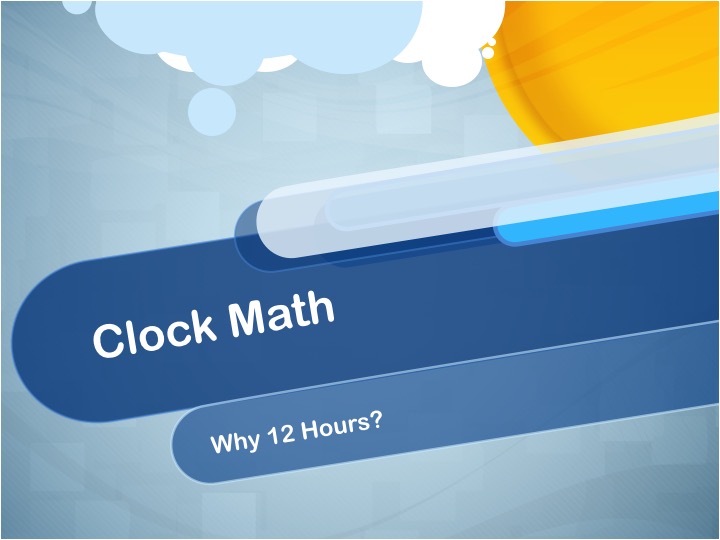
Display Title
Video Tutorial: Clock Math
Display Title
Video Tutorial: Clock Math
Why are there 12 hours in a clock rather than 10? In this video we explain why 12 is the preferred number for clocks and calendars.
—PRESS PREVEW TO SEE THE VIDEO TUTORIAL—
To see the complete collection of video tutorials, click on this link.
Clock Math Video

The video was uploaded on 12/16/2022.
You can view the video here.
The video lasts for 2 minutes and 45 seconds.
Video Transcript
We’re so accustomed to counting by tens, but there's a glaring exception, where we count by twelves. On a clock there are 12 hours, rather than 10. Why is that? On a calendar, why are there 12 months, rather than 10?
Believe it or not, there are instances when counting by 10 isn’t the best idea. To better understand that, suppose clocks did have 10 hours.
Here's a 12-hour clock.
Here's a 10-hour clock.
Let's compare what it means for it to be a quarter after the hour. With a 12-hour clock, a quarter after the hour aligns with 3 o'clock. With a 10-hour clock, a quarter after the hour aligns with 2.5 o'clock.
See the problem?
We don't want to measure main units of time, hours, in decimal amounts. We want whole numbers.
A 10-hour system is filled with decimal values like this. For example, a third of an hour aligns with 4 o'clock, in a 12-hour system. In a 10-hour system? It's 3 and 1/3 o'clock.
Yikes.
And, even when the 10-hour clock has a whole number value, it's confusing. For example, 6 o'clock in the 12-hour system is the same as 5 o'clock in the 10-hour system.
Confused yet?
Why does this happen?
Look at the factors of 10:
1, 2, 5, and 10
These are the only positive whole numbers that divide evenly into 10.
Now look at the factors of 12:
1, 2, 3, 4, 6, and 12
The fact that 12 has more factors than 10 means that there are more fractions of an hour that are still whole numbers.
For example, a quarter of an hour, a third of an hour, half an hour, and three quarters of an hour, in a 12-hour system, still result in whole number amounts of time.
Not so with a 10-hour system.
Now do you see why it's easier to count by twelves, when it comes to time, than to count by tens? The same idea applies to months.
There are twelve months in a year. A quarter of a year is three months. The four seasons are each a quarter of a year. Half a year is six months. These fractional amounts just wouldn't work with a ten-month year.
As a result, the Chinese zodiac, and other zodiac systems, have twelve symbols, one for each month.
| Common Core Standards | CCSS.MATH.CONTENT.4.OA.B.4 |
|---|---|
| Duration | 2.5 minutes |
| Grade Range | 4 - 6 |
| Curriculum Nodes |
Arithmetic • Multiplication • Multiplication Expressions and Equations |
| Copyright Year | 2022 |
| Keywords | clocks, factors |